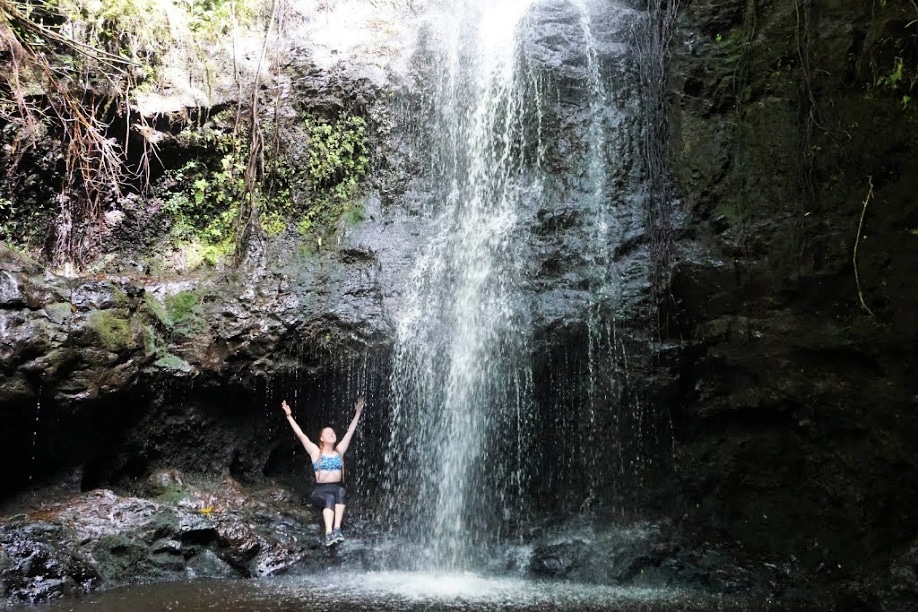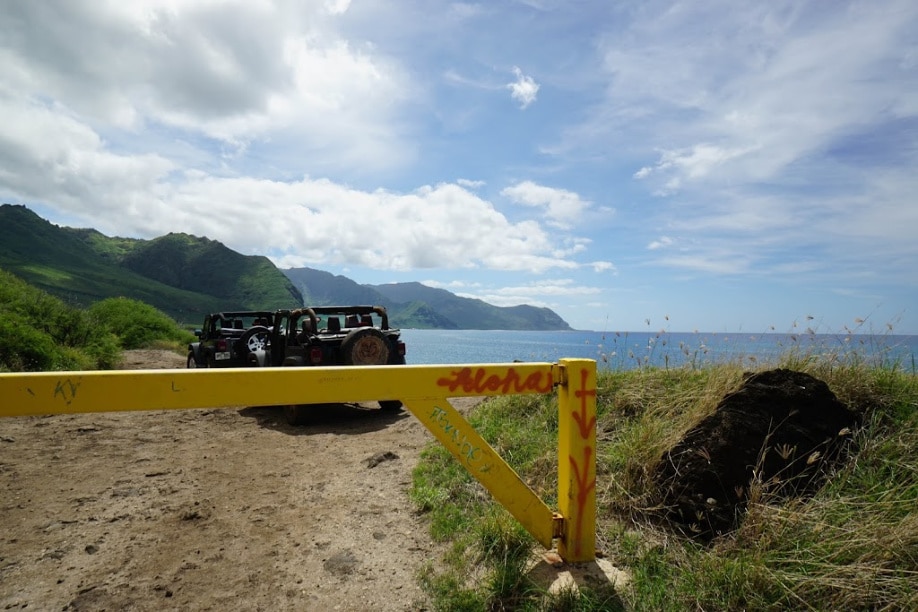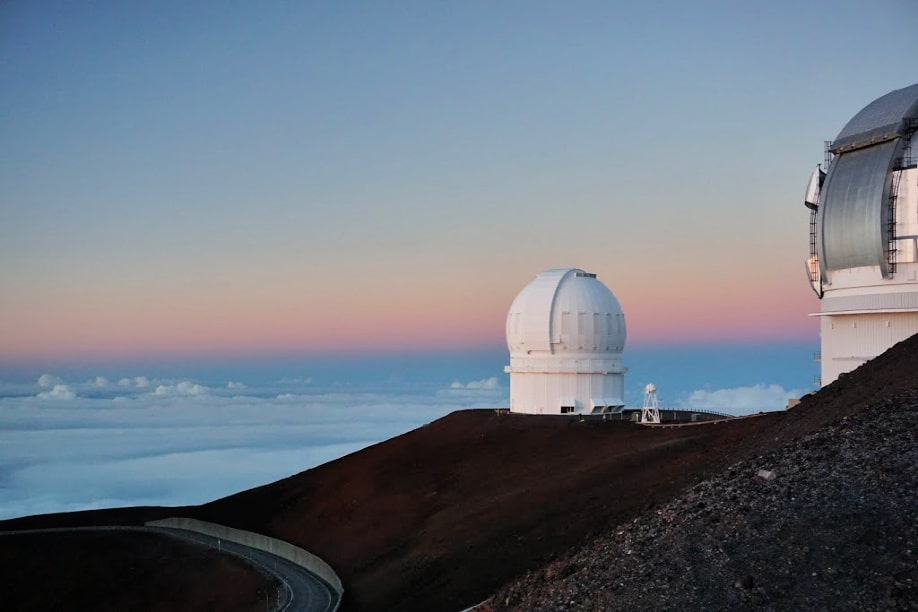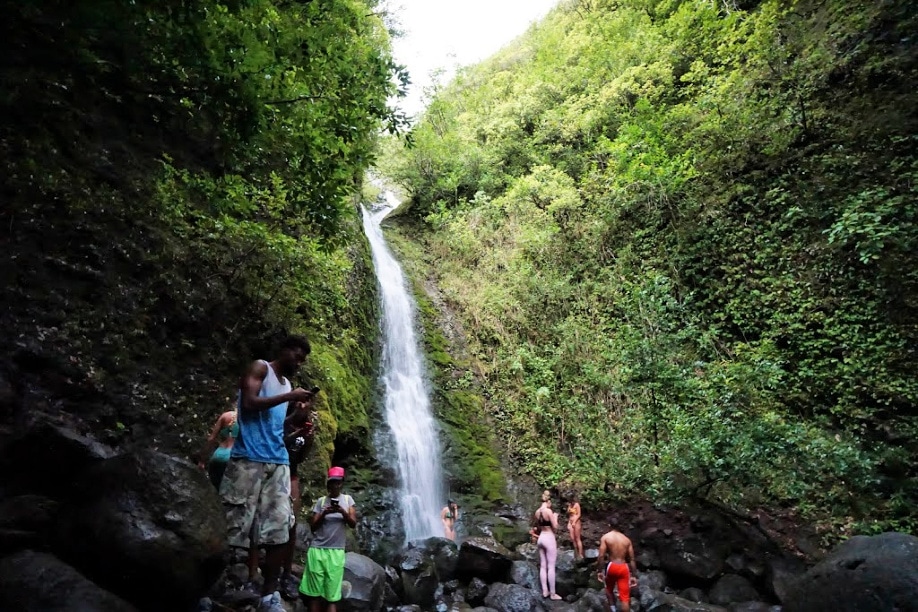I’ve hiked the Appalachian Mountains in the northeastern United States, explored the dense forests of the Pacific Northwest, and walked the coastline of California. Each region has something amazing to offer the outdoor enthusiast, but none compare to the variety and uniqueness of hiking Hawaii.
For the last five years I’ve been exploring the major islands in the Hawaiian archipelago on a mission to witness every waterfall, summit every peak, and take in every view that the amazingly diverse and remote destination has to offer.
These five hikes are my favorites and offer a wide array of different experiences. No matter what you want to see, from awe-inspiring waterfalls to dense jungles to infinite blue ocean waters, there’s a trail for everyone.

1. Ka’au Crater Hike
Quick Description: A stunning display of Hawaii’s tropical side, the Ka’au Crater Hike is a must-do experience for the active outdoorsman (or outdoorswoman!) complete with three waterfalls, rigorous climbs, and stunning views of Oahu from one of the island’s tallest peaks…if you make it that far.
- Island: Oahu
- Difficulty: Intermediate or Advanced
- Distance: 6 miles
- Elevation Gain: 1,800 feet
- Estimated Time: 5-7 hours
- Trail Type: Loop (if you elect to go the whole hike)
- Hiker Traffic: Moderate
“Welcome to Fern Gully.” That’s what my wife and I always say when we first descend from the road-level entrance to this hike down into its gullet, because from your first step until your last, the Ka’au Crater Hike is an adventure that gives you an authentic Hawaiian experience complete with lush jungles, tall waterfalls, and astounding views from the summit.
When friends and family come to visit, this is the hike I take them on. But usually not the whole hike, because the Ka’au Crater Hike can be broken up into a few different lengths depending on both the skill level of your group and how much time you have.
At its most extreme the hike is a 6-mile, 1,800-foot odyssey that takes you from Palolo Valley floor to the top of one of the highest peaks on Oahu. Along the way you’ll encounter three waterfalls, the last of which you’ll have to scale with the help of a rope system already in place, before finishing a steep climb along the crater’s ridgeline to its peak.
If you elect to do this whole hike, prepare to be drained.
When my 60-year-old mother came to visit in November 2017 we didn’t do the whole hike. Instead, we hiked about one hour in to the first waterfall, pictured in the image above. It truly is a picturesque scene and might be my favorite waterfall on Oahu. It’s about 50 feet tall and the water pours into a bowl-shaped basin, which has been cut from the porous lava rock from centuries of continuous pounding. The basin is deep enough to swim in, though the water is very cold.
The Ka’au Crater Hike checks almost every box on the Hawaiian hiker’s checklist and is a must-hike trail for those who can handle the intermediate-to-advanced level of difficulty.

2. Ka’ena Point Trail
Quick Description: Bring sturdy shoes and plenty of water for this rocky hike on Oahu’s arid western shore, and don’t forget the camera for unique opportunities at photographing Hawaii’s big game wildlife, such as albatross, monk seals, and humpback whales.
- Island: Oahu
- Difficulty: Intermediate
- Distance: 3.5 miles
- Elevation Gain: 130 feet
- Estimated Time: 2-3 hours
- Trail Type: In-and-back
- Hiker Traffic: Low
The Ka’ena Point Trail is the exact opposite of the Ka’au Crater Hike, and it’s my favorite trail in Hawaii. The Ka’au Crater Hike is a long, challenging excursion through the jungle, complete with waterfalls and massive elevation changes. The Ka’ena Point Trail has none of that.
This trail, located on the arid western coast of Oahu, is 3.5 miles of unsteady, rocky terrain without substantial elevation changes. While it’s advisable to bring water on every hike, you’ll need extra for this one as the strong Hawaiian sun beats down on you for 2-3 sweat-soaked hours.
Why do I love this hike so much? First, it’s located on the non-touristy, northwestern-most point of Oahu and isn’t heavily trafficked. Second, the hike leads to the Ka’ena Point Nature Preserve, where you’ll find albatross nesting and Hawaiian monk seals sunbathing on the beach, which is made of bleached white coral that’s washed ashore. And, if you come during the November-to-May whale season, you may see humpbacks breaching in the impossibly blue waters.
This trail is one of the most out-of-the-way destinations on Oahu, and you’ll definitely need a car to get there. The drive is about 60-90 minutes from most Honolulu or Waikiki hotels, but it’s a wonderfully unique and scenic drive that takes you through the most non-touristy areas of Hawaii’s main island.
Do yourself a favor and get up early to do this hike, because the afternoon sun on the west side can beat you down with a sneaky intensity. Hawaii is, after all, at the same latitude as Cuba! And when you’re finished and returning to Honolulu, I recommend stopping in Ko Olina to grab some food at Monkeypod, one of my favorite restaurants in Hawaii.

3. Mauna Kea Summit Hike
Quick Description: With nearly one mile of elevation change beginning at the Visitor’s Center and culminating at the 13,800-foot summit of the world’s biggest mountain from base to peak (yes, larger than Everest), the Mauna Kea Summit Hike is a once-in-a-lifetime experience suited only for the strongest hikers who are ready to endure the fatiguing, low-oxygen conditions.
- Island: Big Island
- Difficulty: Hard
- Distance: 6 miles
- Elevation Gain: 4,600 feet (starting at 9,200 and climbing to 13,800)
- Estimated Time: 8-12 hours
- Trail Type: In-and-back
- Hiker Traffic: Low
Whew boy, this hike is not for the inexperienced. Six miles is challenging enough on its own, and adding in the 4,600-foot elevation change really ramps up the difficulty, but the cherry on the top of this why-did-I-think-this-was-a-good-idea sundae is how high up you are. This hike starts at 9,200 feet!
For the uninitiated who’ve never dealt with these kinds of elevations before, let me tell you from first-hand experience how loopy you can get just lightly strolling this high up. According to an air pressure calculator at Altitude.org, the 9,200-foot elevation at the start of this hike offers just 72% of the oxygen available at sea level (where most other Hawaiian hikes are), and by the end at 13,800 feet you’re down to just 61%. Bring plenty of water and a few sugary snacks to give you some quick energy, because you’re going to need it.
It's also going to be cold as the top of Mauna Kea is usually blanketed in snow. A down jacket may not be something you ever thought you’d need on your Hawaiian vacation, but daily high temperatures often fail to crack 30°F.
The terrain along the way is rocky and alien. In fact, NASA uses many sites on Mauna Kea for their moon and Mars exploration training! If you’re resilient enough to reach the summit, you’ll be treated to a unique view from above the clouds that few people ever witness. I mean, just look at the photograph above, which I took on my last trip to the summit to watch the sunset.
While the following comment goes for all hikes in Hawaii, it’s especially true for this one: Be respectful of the land, clean up all of your garbage, and stay on the trail. Mauna Kea is a deeply sacred site for the Hawaiian people. It’s believed to be where gods lived according to the Native Hawaiian religion, and not long ago it was off limit to everyone except kings and high-ranking religious officials. We’re lucky to be able to explore Mauna Kea today.
As a final note, read this guide before attempting the summit hike. There’s some important safety information and a few notes about how to be respectful when hiking in this sacred area.

4. Lulumahu Falls Hike
Quick Description: A surprisingly scenic trail of moderate difficulty, the Lulumahu Falls Hike takes you into private government property (permit recommended), through a bamboo forest, and up muddy embankments before yielding to a beautiful 50-foot waterfall that makes the mud and mess worth it.
- Island: Oahu
- Difficulty: Moderate
- Distance: 2.5 miles
- Elevation Gain: 700 feet
- Estimated Time: 2-3 hours
- Trail Type: In-and-back
- Hiker Traffic: High
Quick note from the start: This hike is technically on private government property owned by the Honolulu Board of Water Supply. That said, this is a heavily-trafficked hike, and my wife and I completed it without issues from officials. However, getting a permit is recommended.
Compared to the other hikes above, this one is a little harder to navigate. We got lost at the beginning and ended up walking in circles through a tall bamboo grove before we found the right path. (And the only reason we found it was because we started following other people.) For the most part this hike isn’t marked, so you’ll need to use your best explorer instincts to find the right way.
Also, be prepared to get wet and muddy, which is a good guideline for just about any waterfall hike. There are several sections where you’ll need to do some light climbing up steep, muddy slopes, so sturdy shoes are recommended as well.
Your reward for a few hours of easy-to-moderately difficult hiking is Lulumahu Falls, a 50-foot waterfall with a shallow pool of water at its base. Unlike many waterfalls, which fall into deep pools of water that keep visitors at bay, Lulumahu Falls is easy to get close to for some awesome pictures or a refreshing rinse. The photo above showcases the beauty of the falls but also how heavily trafficked it can be.
As a bonus, the parking lot for this hike is right near the start of the Judd Trail, which takes you to the Kaniakapupu Ruins. These ruins are the home of King Kamehameha III’s summer palace. As you explore the site you can see old walls and doorways that remain erect over 150 years after the home was built.

5. South Point Trail
Quick Description: Less of a trail and more of a destination that has a few points of interest worth exploring, South Point is famous for being the southern-most part of the United States of America. Here, you can cliff jump (in the right conditions), walk to a green sand beach, and generally just experience the solitude of an incredibly beautiful but desolate spot on Hawaii’s Big Island.
- Island: Big Island
- Difficulty: Easy
- Distance: Varies, see below
- Elevation Gain: Minimal
- Estimated Time: Varies, see below
- Trail Type: In-and-back
- Hiker Traffic: Low
First, let me address the distance, elevation gain, and estimated time notes from above. There are several ways to “hike” South Point, all of which require a long drive to this out-of-the-way location on the southern-most tip of Hawaii’s Big Island. South Point is less of a hike and more of a destination or experience. You could walk the shoreline for half-a-mile and call it a day, or you could strap on your camelback and begin the eight-mile (one way) trek to the olivine-rich green sands of Papakolea Beach.
But South Point is more aptly thought of as a menagerie of remote vistas. I’ve decided to include it on this list because you could spend hours walking these various trails, taking in some of the most breathtaking sights Hawaii has to offer.
See the accompanying picture above? That’s a candid shot my wife took of me being blown away by the stark contrast of the impossibly blue water against the black cliffs and tall yellow grasses. It’s hard to describe the sense of perspective you feel gazing out at the horizon, knowing there’s nothing but water for thousands of miles.
Regardless of your fitness level or the type of scenery you crave, there’s a hike for everyone in Hawaii. These happen to be my five favorites, but there are hundreds more worth mentioning. If you’ve ever hiked a truly incredible Hawaiian trail, comment below to tell us which!
About Bryan Hunter
I’m Bryan, creator of The Outdoor Authority. While I’m from the United States, I have visited Europe and South America, including a life-changing trip to the Galapagos Islands, and currently live in the beautiful island paradise of Hawaii. My goal with The Outdoor Authority is to share my passion for all things outdoors, from camping and hiking to fishing and recreational activities. Come check it out and share your outdoors experiences, as we can all be outdoor authorities.
